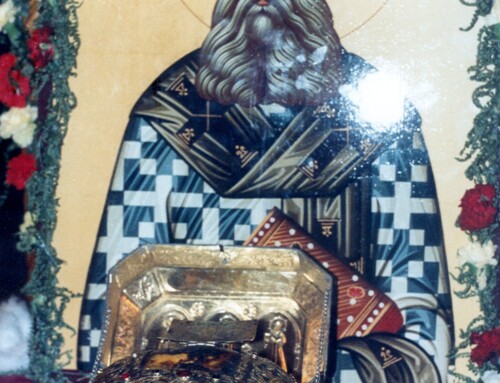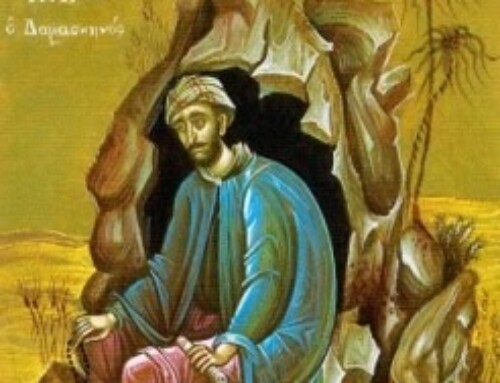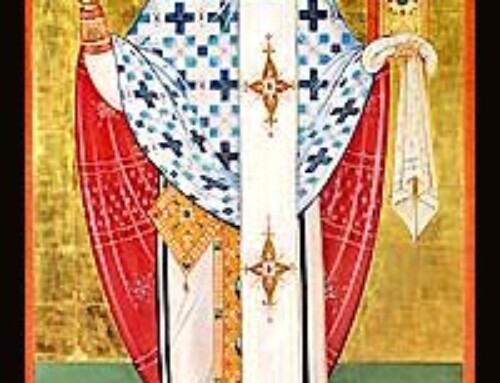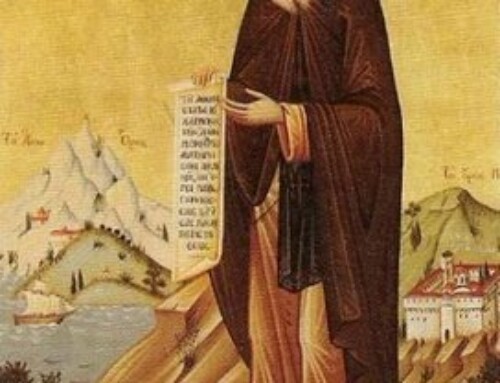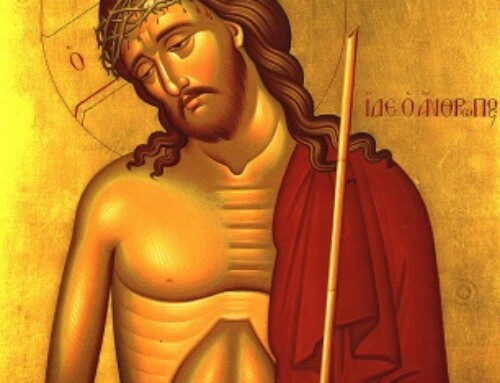Word Magazine November 1957 Page 227/250
THE BIBLE IN ORTHODOX
CHRISTIAN EDUCATION
by REV. PAUL W. S. SCHNEIRLA
The source of Orthodox dogma is divine revelation. The Reformation in the west focused attention on the channels and depositories of revelation, and both the Papal apologists and the exponents of the new Protestantism tended thereafter to express themselves in terms of Scripture and Tradition, or of Scripture alone, as the primary fonts of revealed truth. 1 This uncautious phraseology penetrated parts of the east, and some popular catechisms designate Scripture and Tradition as the two sources of Orthodox dogma.” It is a tribute to the vigor of contemporary Orthodox theology that Father Sergius Bulgakov perceived the error in our time, and effectively disarmed it. Whatever disturbing significance his emphasis may have for the separated Christians of the west, it liberated Orthodoxy at one stroke from any dependence on a borrowed heresy sufficiently malignant to distort our basic orientation to the Holy Scriptures, and so radically poison all theological development.
The first concern of anyone involved in the creation of Orthodox educational material will be with the right relationship between the Holy Scriptures and the totality of Orthodox dogma. Our immediate spiritual ancestors sometimes borrowed the western duality: Scripture and Tradition. For much of the west the primacy lay with an independent or self-sufficient Scripture. The Westminster Confession of Faith2 makes a typical Reformed declaration: “The authority of the Holy Scripture, for which it ought to be believed and obeyed, dependeth not upon the testimony of any man or church, but wholly upon God. (who is truth itself,) the author thereof; and therefore it is to be received, because it is the Word of God . . . so as in all controversies of religion the Church is finally to appeal unto them” (i.e. the Old and New Testaments). Spiritual leaders who were forced by circumstance to disavow fifteen centuries of Christian experience could overlook the error implied in all such confessional statements. The Church cannot do so.
It is refreshing to turn to Bulgakov. “Holy Scripture is a part of the tradition of the Church. It is that tradition which affirms the value of the holy books in the Church . . . The Church has given us the Bible through tradition, and the Reformers themselves received the Bible from the Church and by the Church, that is to say by tradition.”3
The fellowship of believers, old Israel and the Church, truly wrote, edited and limited the extent of the Holy Bible. The function of the fellowship was negative, exclusive in response to need. Seen in the perspective of instrument and product, the Church and the Scripture reveal a distinctive Orthodox relationship. The Church is tradition, eternally preceding, and in time producing, completing and developing Scripture. In this proper environment the Scripture lives as a part of a creative organism with its ultimate fulfillment in an eschatological future. Scripture surrenders all self-sufficiency in order to participate in a greater reality, in which it gives life and direction, and is reciprocally enriched and invigorated by an ever-progressing and constantly deepening understanding in the Holy Spirit.
In the Church both the moribund Bibliolatry of classical Protestantism and the anti-Biblicism of the Counter Reformation are impossible. Unfortunately, either or both may be influential in limited periods and areas; and while such novel approaches will not ultimately disfigure, or finally cripple, the Orthodox witness, they may temporarily blight the full flowering of the life of Christ. It is precisely at this point that the Orthodox educator will refer to his standards of discrimination. Granting the necessity of accepting and utilizing the Bible in its only proper context, the Church, how, specifically, is the Scripture to be presented? What role will it play in the educational program?
The answer is so obvious it is frequently overlooked. The ordinary Orthodox Christian, even the believer with the most casual and perfunctory devotional life, is presented with the Scripture by the Church in a very special and significant way: it is solemnly read to him imbedded in a complex of prayers and hymns themselves intricately tied into a series of rites directly related to the annual systematic liturgical commemoration of the history of Salvation. Ideally the reading is accompanied by some comment adjusting the eternal message to contemporary needs. But even without this, the lectionary pericopes are read in a service which, at best, is largely a poetic commentary on the appointed lessons. Main themes are emphasized, cross references made, conclusions drawn, and the whole is designed to expound if not fully exhaust the implications of the text. In the rite celebrated there is more; there is the Church reliving, or transcending space and time to confront in mystery, the event narrated in the reading. Except for this last element, the rite provides the full pattern for the use of the Bible in Orthodox Christian education programs.
There is a second and secondary use of the Bible by the Church, and it too bears on training programs. This is the private or non-liturgical reading of the Scriptures. It is a commonplace that the writings of the Fathers are virtual mosaics of Scripture fragments. The patristic use of Scripture typically evidences an exhaustive knowledge of the text, and infrequently, given the viewpoint of the Fathers can we suggest additional or more appropriate references. This use of the Bible by clergy and people is characteristic of all ages in the Church; the large and numerous Greek and Slavonic editions testify to this, and a Church school which does not provide the habit of personal Bible reading would fail in an important duty.
Nevertheless, private use of the Bible does not suggest private interpretation to the Orthodox, and it is appropriate that the reference to the Church in Kraeling’s exhaustive The Old Testament Since the Reformation should be a paragraph on the seventeenth century laws prohibiting the unrestricted reading of the Bible to the laity.4 The interpretation of Scripture, even as a guide to personal faith and ethical conduct, is unthinkable apart from the fullness of tradition: a principle which would normally be imparted with the habit of Bible reading. The Holy Spirit abides in the covenanted fellowship, and personal experience, to be fruitful, is confirmed by the Spirit.
With these general principles as guide, Orthodox educators can make practical use of the Bible in materials and methods. The rite offered as model by the Church is didactic in the best sense: speaking to the soul. Within the limitations of the school room, lesson materials cannot do this, obviously, but they can employ the techniques which motivated the inspired authors of the rite. What does this involve? First, there is direct presentation of selected texts with a commentary which makes full use of parallel Scripture passages enriched from non-Scriptural tradition. Scripture is, therefore, neither replaced nor paraphrased in the first instance. It is presented unadorned and then amplified; but it is not offered without the fixed commentary. (Aside from the Great Feasts, the daily lections may be related to the rest of the office in a very general, or only accidental, way; the thesis presented in this outline supposes that the ideal is the unity apparent in the offices of the major commemorations.) The present Syrian series follows this pattern, although it is now felt that the commentary is too western in connotation, and the approach somewhat academic, and a new series is partially completed. For comparative illustration it may be noted that the present Carpatho-Russian material uses Scripture very indirectly, while the current Greek series, in the earlier grades, is utterly lacking in traditional support. Orthodox conditioned by the west must avoid the twin dangers of forgetting that the Bible is the book of the Church, and neglecting or minimizing it, or, on the other hand, overemphasizing it in deference to Protestant exaggerations. The Syrian approach, Scripture, dogma and liturgy, is ideal if the presentation develops a smoothly homogenous lesson.
The Church gives us these simple and general, but wholly adequate, principles. A few practical problems involved in our use of the Bible require some additional attention, here and in our educational programs.
Prominent among these difficulties is sectarian use of the Bible. This ranges from the appeal made to our people by lingering fundamentalists who replace the Church-as tradition with the Bible, to the influence on our teachers of the readily available and popular books of men like Fosdick. Our teachers, and by all means the authors of our materials, should be familiar with the ideas of the fundamentalists, especially such indiscriminating Scripturalists and aggressive proselytizers as Jehovah’s Witnesses and the Seventh Day Adventists, and the more palatable but no less non-Orthodox opinions of men like Fosdick, who might call his position “beyond modernism,” and the neo-orthodox Protestants who are increasingly influential on the authors of popular guides to the Bible. The unchecked use of non-Orthodox manuals in our teacher training courses, directly related to the scarcity of Orthodox books, can deflect our tradition at the source.
There are problems inherent in the form of the Bible, which must be met by those who teach it. Within the framework of a lesson series we can select texts which are intrinsically attractive and useful. In private reading, and always for the more energetic and curious pupils, there is the question of dullness and disedication in the Old Testament, and what we may reverently call – “sketchiness” in the New. Orthodox understand that the New Testament was not written in a vacuum; often the skeleton it offers must be clothed for the believer with the flesh of tradition, and here again we meet constantly the attitude so well stated in the sixth of the Thirty-nine Articles: “Holy Scripture containeth all things necessary to salvation: so that whatsoever is not read therein, nor may be proved thereby, is not to be required of any man, that it should be believed as an article of the Faith, or be thought requisite or necessary to salvation.” This classical anti-traditionalism, a pitfall when the developed faith and practice of the Church is referred to the New Testament, ignores the fact that the choice is always between varying traditions, never between tradition or no tradition.
While the preparation necessary to respond constructively to these inherent difficulties is the proper evidence of teacher training, our present circumstances would seem to require that authors or editors of educational courses provide some specific guidance where tradition must
supplement the text.
Our teachers are presumably formed by the general psychological atmosphere of an Orthodox community. In matters of faith this will be characterized by extreme conservatism. The spirit of the Church is credulous in the best sense. It cultivates an awareness of spiritual reality which engenders an expectancy sympathetic to ideas and events outside of ordinary sense experience. This spirit may be strong enough to inhibit proper discrimination in the use of the sacred books. The believer will unconsciously assume that the Church requires literalism in the interpretation of the Bible. There may arise, for example, a certain resistance to the current scientific theories regarding the origin and evolution of the universe and life. The Christian bodies with a longer history of contact with western scientific thought will have solved what was once called “the conflict between religion and science” in various ways. It is regrettable that some of the solutions proposed in American Orthodoxy have been based on outmoded western Christian positions, when the patristic witness is not only proper to the Church, but objectively sounder in all respects.
A brief general survey can but hint at innumerable important aspects of the Bible in the religious education program. A case in point is the integration of the so-called “Apocryphal” books which a Protestant liberal can now say, “Some of them are actually as valuable and as truly inspired as some of the books that were retained, or more so.” In the Church the books called Apocryphal by the Reformers are an important, even essential, part of the Bible. Their general unavailability in English versions leads our authors and teachers to ignore them.
The question of English versions itself deserves attention. If our children are to live with and know the Bible they must use some one of the English versions now in print. Ideally the American Church should have a version of its own, and the Greek Archdiocese recently announced the preparation of an English New Testament by over a dozen American Greek scholars. As the initiator of another approach to an American Orthodox version the writer must admit a certain modesty in regard to the readiness of our largely foreign-born community for English literary achievements of the caliber demanded by this particular task. The Syrian Archdiocese is now preparing official New Testament lectionaries based on the Revised Standard Version. The National Council of Churches, the copyright proprietor, has agreed to the use of the RSV, and authorized all modifications required by Orthodox tradition. The Church is thus presented with an opportunity to appropriate a first rate scholarly and literary work.
Because of the position of the Septuagint as an “authorized version” in the New Testament, the liturgical books, and the subsequent history of the Eastern Church, there would be some ambiguity involved in the adaptation of the RSV, or any other English Version, based on the Hebrew. The two currently available English translations of the LXX are unsuitable, and a valuable contribution to the American Church in the Biblical field would be a new translation. The need for a Psalter is especially urgent.
Undoubtedly there are many additional matters which would be properly treated in an exhaustive survey, but reference must be confined to the main theme of this paper: The Church has developed a technique for the presentation of Scripture to the faithful in her offices of public prayer; that technique is the proper pattern for the use of the Bible in Orthodox Christian education. The application of this method will depend on the creativity of the authors of our lesson materials, but the general principle has almost the force of formal declaration of the Church.
In conclusion, we may hope for that illumination of our hearts with the pure light of divine knowledge to the understanding of the gospel teachings, the fear of the commandments, and the victory over all carnal desires, of which the Prayer Before the Gospel in the Divine Liturgy speaks. For the study of the Scripture leads us on holy ground, where we meet the Master Himself and are taught by one having authority.
— In the past half dozen years it has been generally conceded that a misunderstanding of the Tridentine decree on Revelation by Melchior Cano misled several generations of Papal theologians.
2 — Ch. 1. secs iii & viii are quoted.
3 — The Orthodox Church, pp. 21ff. The Italics are Bulgakov’s.
4 — Pages 34-35.

